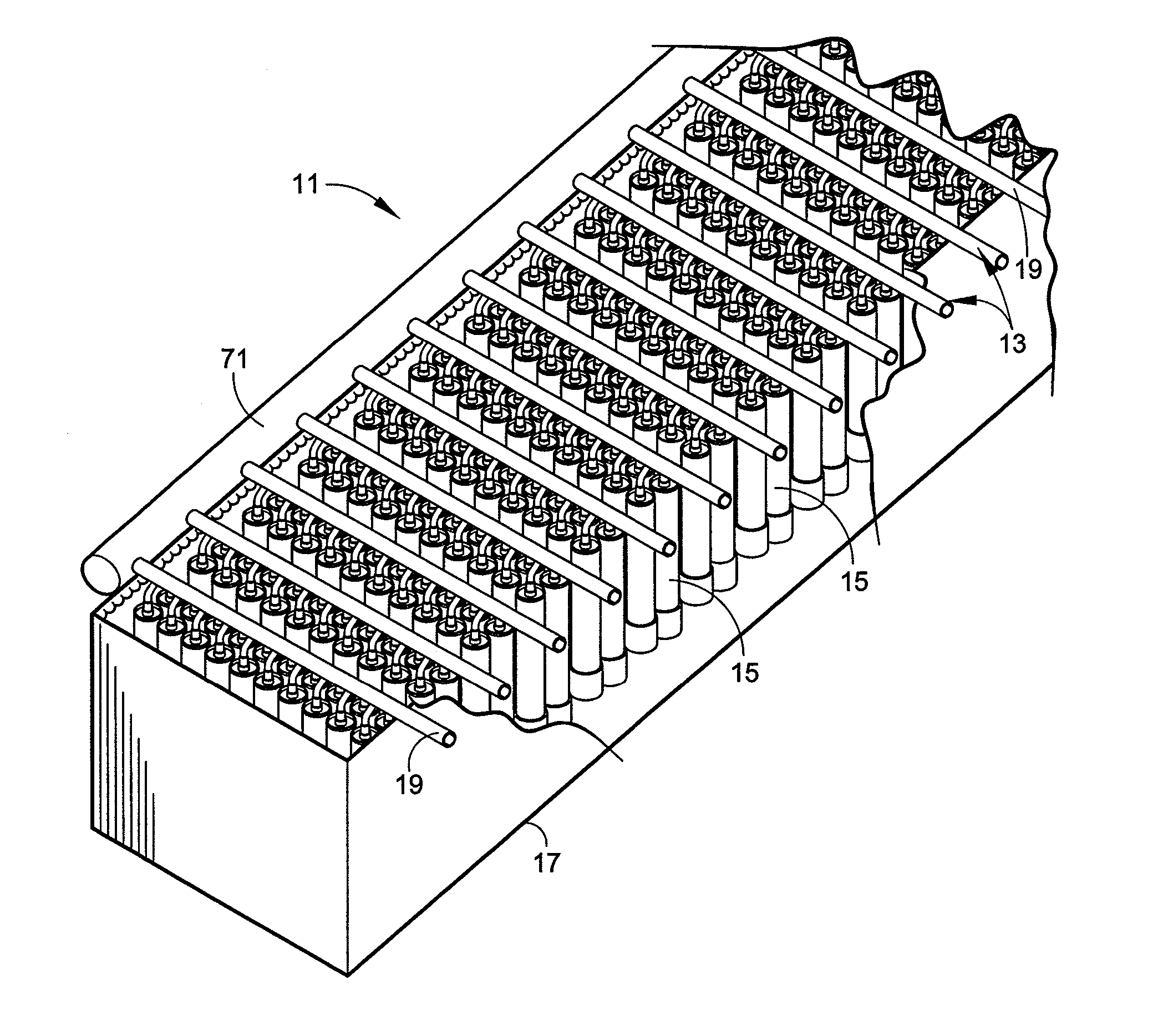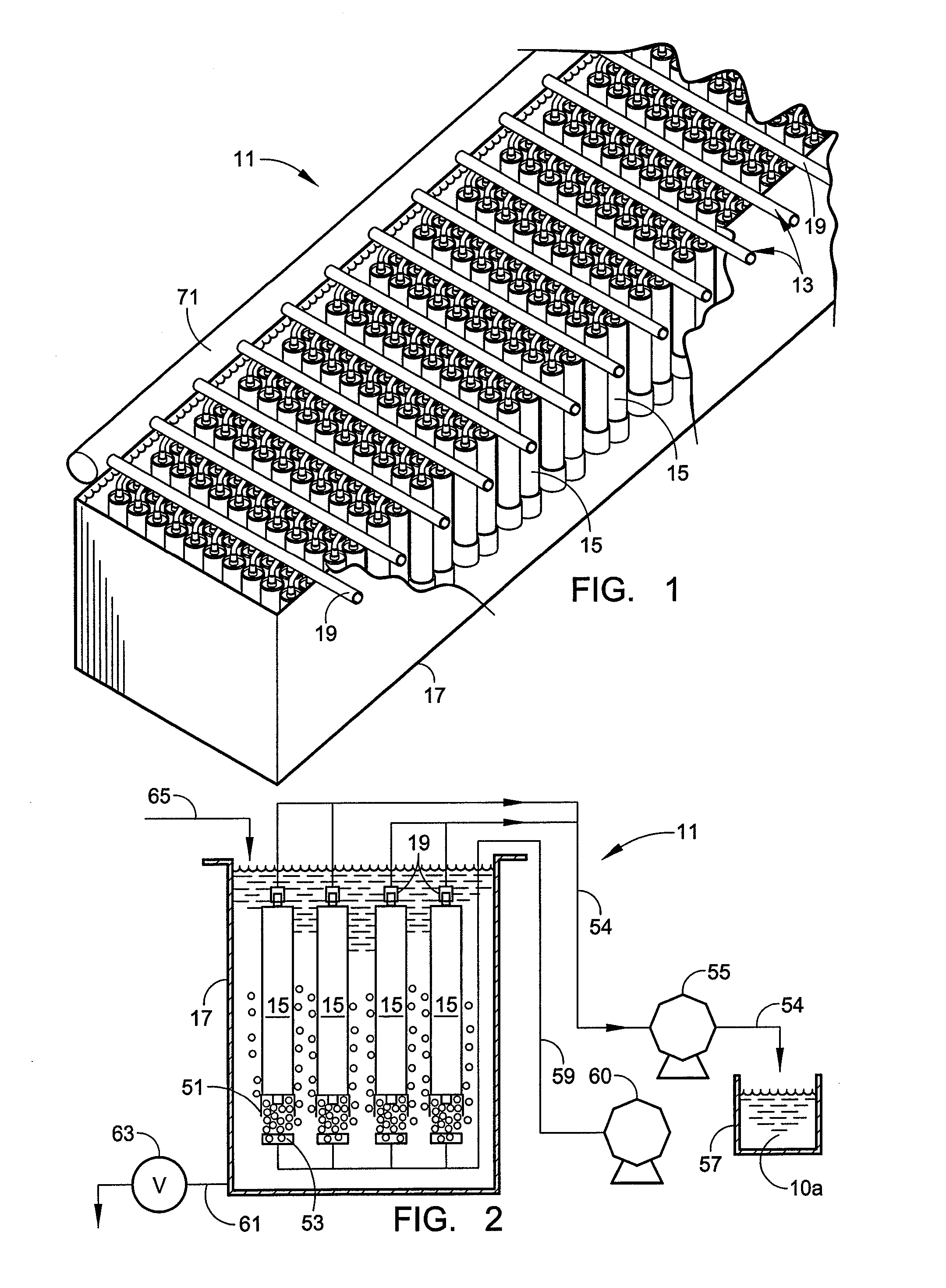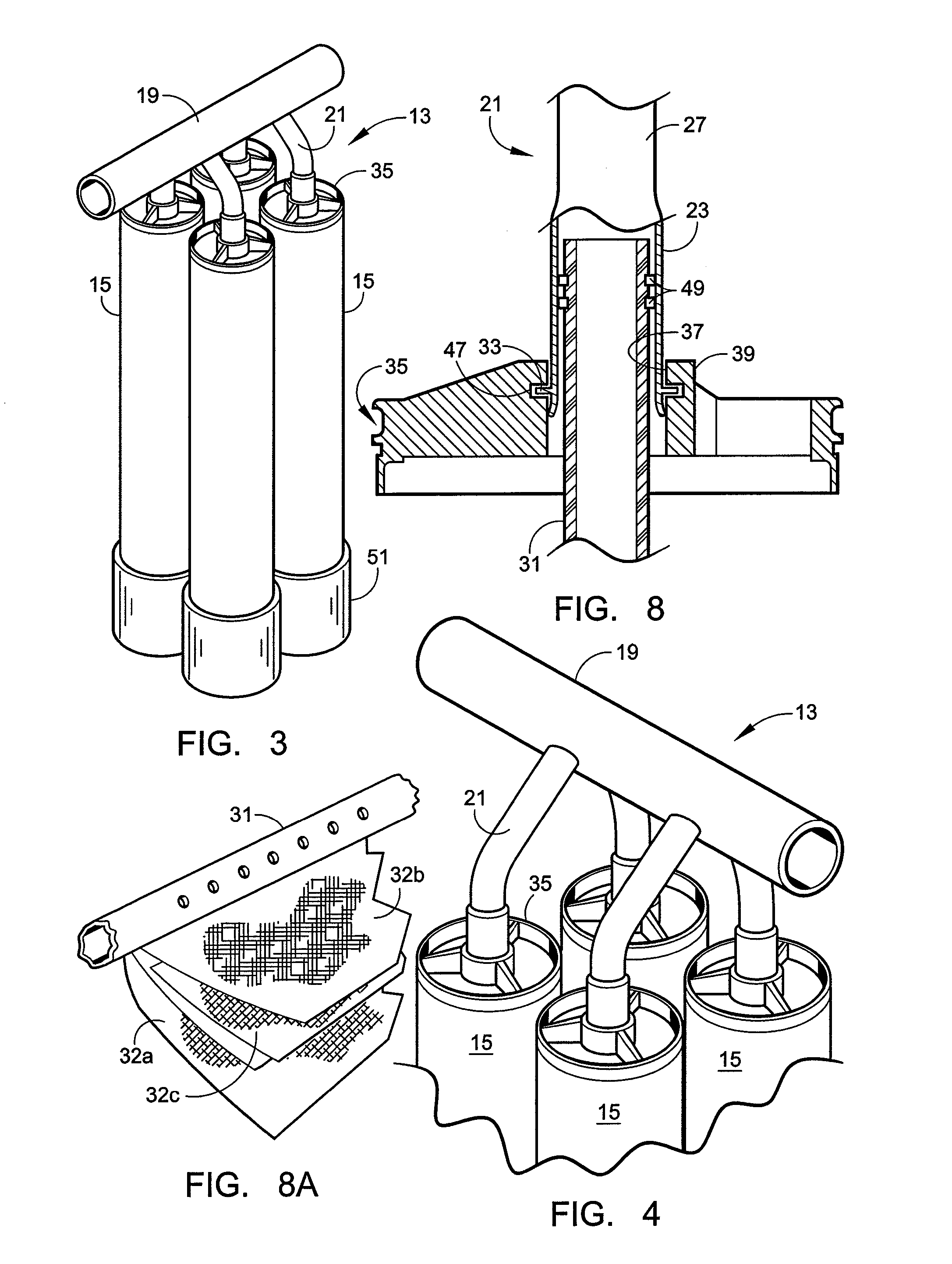Network for supporting spiral wound membrane cartridges for submerged operation
a technology of membrane cartridges and spiral wounds, applied in the direction of membranes, sustainable biological treatment, biological water/sewage treatment, etc., can solve the problems of unsuitable or adaptable arrangements for supporting arrays of cylindrical, spiral wounds, membrane elements, and none of the foregoing arrangements are particularly well suited to creating effective arrays, etc., to achieve the effect of quick connection or disconn
- Summary
- Abstract
- Description
- Claims
- Application Information
AI Technical Summary
Benefits of technology
Problems solved by technology
Method used
Image
Examples
Embodiment Construction
[0024] The invention provides methods and support networks for filtration of liquid feedstocks, preferably liquid feedstocks that are high in suspended solids, which are effective to produce permeate that is lean in suspended solids at an elevated production rate for a sustained period of operation before shutdown for substantial cleaning is needed in order to continue permeate production at a desired high rate of flux. Effective operation can be achieved with a TMP as low as about 0.5 psi (about 25 mm of Hg) using specially designed spiral wound elements that incorporate high flow, low pressure membranes, although the use of higher TMPs for increased flux are preferred. In this respect, a TMP of at least about one psi, e.g. about 2 to 5 psi, is preferred, while of course still higher TMPs may certainly be used, although such may well require additional power input and may encounter a higher rate of fouling. Examples of such elements are described in copending U.S. Application Ser. ...
PUM
| Property | Measurement | Unit |
|---|---|---|
| angle | aaaaa | aaaaa |
| angle | aaaaa | aaaaa |
| pressure | aaaaa | aaaaa |
Abstract
Description
Claims
Application Information
 Login to View More
Login to View More - R&D
- Intellectual Property
- Life Sciences
- Materials
- Tech Scout
- Unparalleled Data Quality
- Higher Quality Content
- 60% Fewer Hallucinations
Browse by: Latest US Patents, China's latest patents, Technical Efficacy Thesaurus, Application Domain, Technology Topic, Popular Technical Reports.
© 2025 PatSnap. All rights reserved.Legal|Privacy policy|Modern Slavery Act Transparency Statement|Sitemap|About US| Contact US: help@patsnap.com



